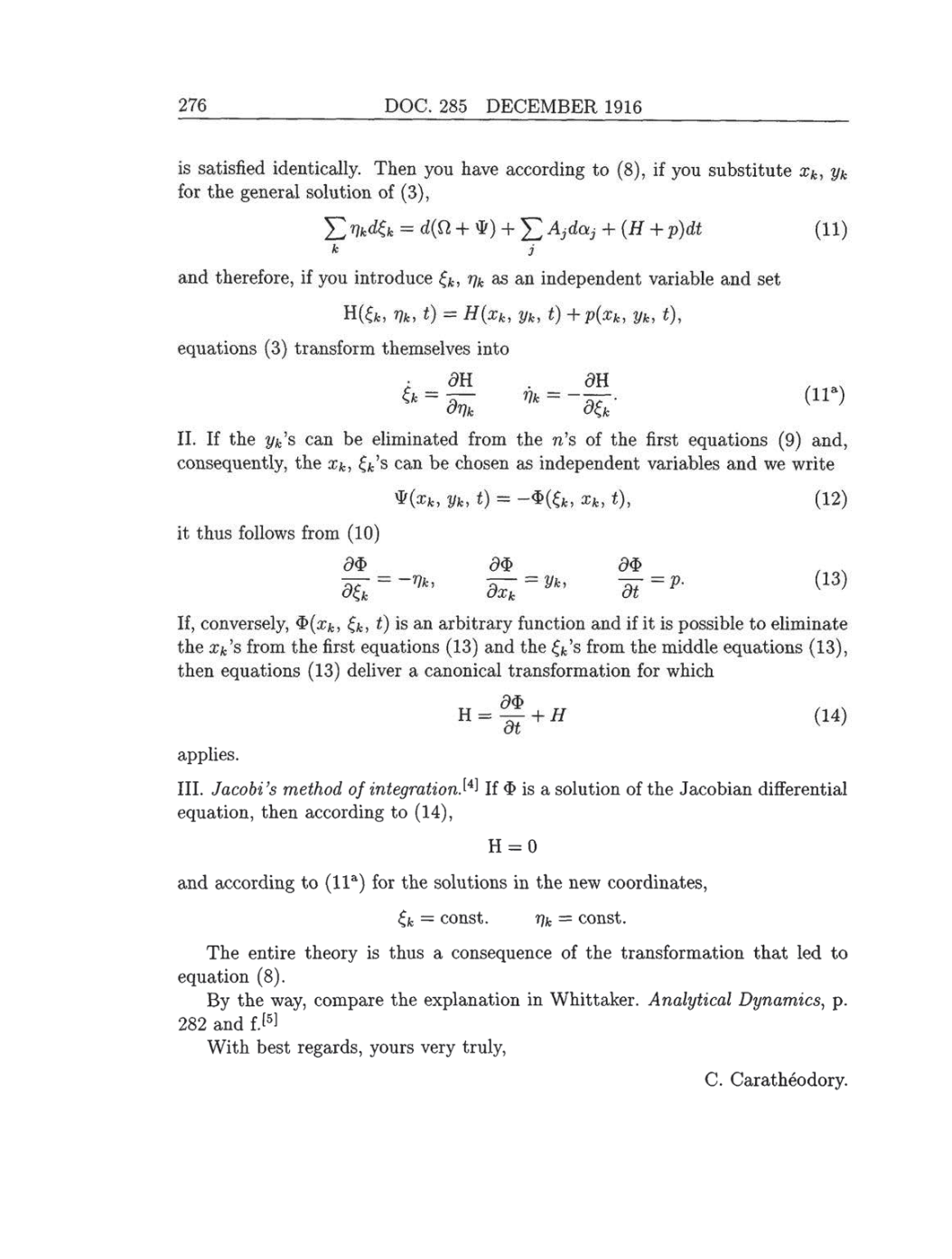276 DOC.
285
DECEMBER
1916
is
satisfied
identically.
Then
you
have
according
to
(8),
if
you
substitute
xk,
yk
for
the
general
solution of
(3),
Y
VkdÇk
-
d(fl
+
*11)
+
Y,
Ajdoij
+
(H
+
p)dt
(11)
and
therefore,
if
you
introduce
Ek, nk
as an
independent
variable and set
H(Ek,
nk,
t)
=
H(xk,
yk,
t)+p(xk,
yk,
t),
equations
(3)
transform
themselves into
dH
•
dH
a
-
x-
orjk
Vk
=
~
d&'
(11a)
II. If the
yk's can
be
eliminated from
the
n’s
of
the
first
equations
(9)
and,
consequently,
the
xk,
Ek’s
can
be chosen
as
independent
variables and
we
write
yk,
t)
=
-$(&,
Xfc,
t),
(12)
it
thus
follows
from
(10)
d$ d$
d$
Wk
~
~Vk’
?»
II
i
-*
(13)
If, conversely, O(xk,
Ek,
t)
is
an
arbitrary
function
and
if it
is
possible
to
eliminate
the
xk's
from
the
first
equations
(13)
and
the
Ek’s
from
the
middle
equations
(13),
then
equations
(13)
deliver
a
canonical
transformation
for which
H=dP/dt
+H
(14)
applies.
III. Jacobi’s method
of
integration.[4]
If
$
is
a
solution of
the Jacobian
differential
equation,
then
according
to
(14),
H
=
0
and
according
to
(11a)
for
the
solutions in
the
new
coordinates,
Ek
=
const.
nk
=
const.
The
entire
theory is
thus
a
consequence
of
the transformation
that
led to
equation
(8).
By
the
way,
compare
the
explanation
in
Whittaker.
Analytical
Dynamics,
p.
282
and
f.[5]
With best
regards, yours very truly,
C.
Carathéodory.
